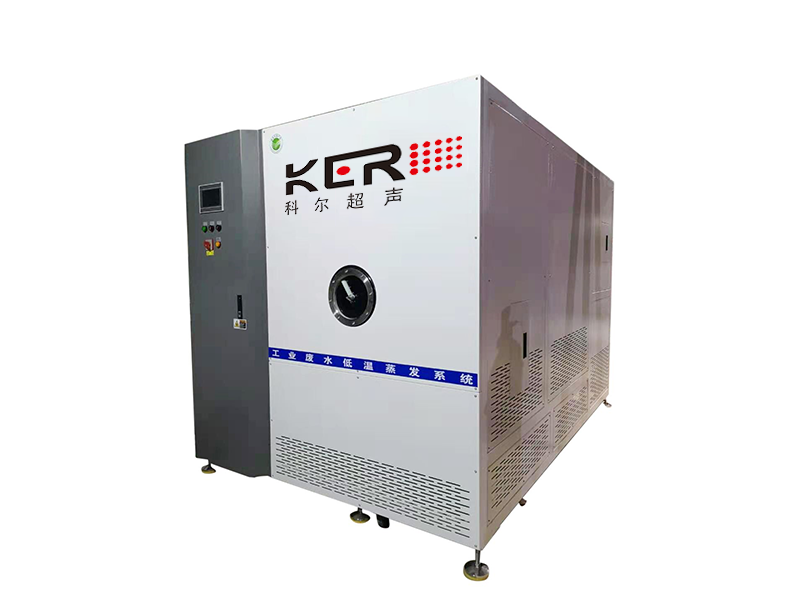
化工低溫廢水處理設備閉路循環(huán)零排放技術解(jiě)析
作者:創始人來源:http://www.ahfanglei.com/時間:2025-06-16
在化工行業,廢水處理一直是環保領域的(de)重點和(hé)難點。尤其是低溫廢(fèi)水,由於其溫度低、處理難度大,傳(chuán)統(tǒng)處理方(fāng)法往往難以達到理想的(de)處理效(xiào)果。然而,隨著環保意識的增強(qiáng)和技術的不斷進步,閉路(lù)循環零排放技術逐漸成為化工低溫廢水處理的新趨勢。本文將詳細解析這一技術的(de)原理、優(yōu)勢及實現路徑。
In the chemical industry, wastewater treatment has always been a key and difficult point in the field of environmental protection. Especially for low-temperature wastewater, due to its low temperature and difficult treatment, traditional treatment methods often fail to achieve ideal treatment results. However, with the increasing awareness of environmental protection and continuous technological progress, closed-loop zero emission technology has gradually become a new trend in the treatment of low-temperature chemical wastewater. This article will provide a detailed analysis of the principles, advantages, and implementation paths of this technology.
閉路(lù)循環零排放技術,顧名思義,是一種(zhǒng)將廢水在係統內循環處理,最終實現無(wú)廢水外排的環保技術。其核心在於通過一係列物理、化學和(hé)生物處理手段,將廢(fèi)水中的有害物質去除或轉化,使水質達到回用標準,從而形成一個閉環的循(xún)環係統。這一技術不僅能夠有效解決化工廢水排放問題,還能(néng)實現水資源的(de)最大化利用(yòng),降低生產成(chéng)本。
Closed loop zero discharge technology, as the name suggests, is an environmental protection technology that circulates wastewater within a system for treatment, ultimately achieving no wastewater discharge. Its core lies in using a series of physical, chemical, and biological treatment methods to remove or transform harmful substances in wastewater, so that the water quality meets the standards for reuse, thereby forming a closed-loop circulation system. This technology can not only effectively solve the problem of chemical wastewater discharge, but also maximize the utilization of water resources and reduce production costs.
在化工低溫廢水處理中,閉路循環零排放技術的實現需要依賴先進的處理設備。這些(xiē)設備通常包括預處理單元、主處理單(dān)元和後處理單元。預處理單元主要負責(zé)去除廢(fèi)水中的大顆粒雜質和懸浮物,為(wéi)後續處理提(tí)供有利(lì)條(tiáo)件。主處理單元則采用膜分離、蒸發(fā)結晶等高級氧化技術,深度去除廢水(shuǐ)中的有機物、無機鹽和重金屬等有害物質。後處理單元則對處理後的水進行進一(yī)步(bù)淨化,確保水質達到回用標準。
In the treatment of low-temperature wastewater in the chemical industry, the implementation of closed-loop zero discharge technology relies on advanced treatment equipment. These devices typically include pre-processing units, main processing units, and post-processing units. The pretreatment unit is mainly responsible for removing large particle impurities and suspended solids from wastewater, providing favorable conditions for subsequent treatment. The main processing unit adopts advanced oxidation technologies such as membrane separation and evaporative crystallization to deeply remove harmful substances such as organic matter, inorganic salts, and heavy metals from wastewater. The post-processing unit further purifies the treated water to ensure that the water quality meets the reuse standards.
膜分離技術是閉路循環零排放技術中的關鍵環節。通過采用超濾、反滲透等膜分離技(jì)術,可以有(yǒu)效去除廢水中的微小顆粒、膠體、有機(jī)物和無機鹽等。這些膜材料具有高通量、高截留率和良好的化學穩定性,能(néng)夠在低溫條件下保持高效的(de)分(fèn)離性能。同時,膜分離技術還具(jù)有操作簡便、能耗低、無二次汙染等優點,非(fēi)常(cháng)適合用於化工低溫廢水的處理。
Membrane separation technology is a key link in closed-loop zero emission technology. By using membrane separation technologies such as ultrafiltration and reverse osmosis, tiny particles, colloids, organic matter, and inorganic salts in wastewater can be effectively removed. These membrane materials have high throughput, high rejection rate, and good chemical stability, which can maintain efficient separation performance under low temperature conditions. Meanwhile, membrane separation technology also has the advantages of easy operation, low energy consumption, and no secondary pollution, making it very suitable for the treatment of low-temperature chemical wastewater.

蒸發(fā)結晶技(jì)術則是實現廢水零排放的另一(yī)重要手段。通過加熱廢水使其蒸發,再將蒸汽冷凝成水,從而實現廢(fèi)水的濃縮和淨化。在蒸發過程(chéng)中,廢(fèi)水中的無機鹽和重金屬等有害物質會被濃縮並結晶析出,形成固體廢物(wù)。這些固體廢物可以通過進一步處理實現資(zī)源化利用或安全處置。蒸發結晶技術不(bú)僅能夠有效去除廢水中的有害物質,還能實現(xiàn)水資(zī)源的回收利用,降低生產成本。
Evaporation crystallization technology is another important means to achieve zero discharge of wastewater. By heating wastewater to evaporate it, and then condensing the steam into water, the concentration and purification of wastewater can be achieved. During the evaporation process, harmful substances such as inorganic salts and heavy metals in wastewater will be concentrated and crystallized, forming solid waste. These solid wastes can be further processed to achieve resource utilization or safe disposal. Evaporation crystallization technology can not only effectively remove harmful substances from wastewater, but also achieve the recycling and utilization of water resources, reducing production costs.
除了膜分離和蒸發結晶技術外,生物(wù)處理技術也在化(huà)工低(dī)溫廢水處理中發揮著重要作用。通過利用微生(shēng)物的代謝作用,可以(yǐ)去除廢水中的有機(jī)物和氮、磷等營養物質。生(shēng)物處(chù)理技術具有(yǒu)處理效果好、運行成本低(dī)、無(wú)二次汙染等優點,尤其適用於處理含有可生化降解有機物的廢水。
In addition to membrane separation and evaporation crystallization technology, biological treatment technology also plays an important role in the treatment of low-temperature chemical wastewater. By utilizing the metabolic processes of microorganisms, organic matter and nutrients such as nitrogen and phosphorus can be removed from wastewater. Biological treatment technology has the advantages of good treatment effect, low operating cost, and no secondary pollution, especially suitable for treating wastewater containing biodegradable organic matter.
在實現閉(bì)路循環零排放的過程中(zhōng),還(hái)需要注意以下幾點:首先,要(yào)確保處理設備的穩定(dìng)運行(háng)和高效處理。這需要定期(qī)對設備進行維護和(hé)保養,及(jí)時(shí)更換損壞的部(bù)件和膜材料。其次,要優化處理工藝和參數,提高處理效率和水質回用率。這需要(yào)根據廢水的特性和(hé)處理要求,選擇合適(shì)的處理技術和工藝參數。最後,要加(jiā)強廢(fèi)水處理過程中(zhōng)的監(jiān)測和控製,確保處理效果和水質安全。這需要(yào)通過安(ān)裝在線監測儀器和建立完善的質量管理體係(xì)來實現。
In the process of achieving zero emissions in closed-loop circulation, the following points need to be noted: firstly, it is necessary to ensure the stable operation and efficient treatment of the treatment equipment. This requires regular maintenance and upkeep of the equipment, timely replacement of damaged components and membrane materials. Secondly, it is necessary to optimize the treatment process and parameters, improve treatment efficiency and water quality reuse rate. This requires selecting appropriate treatment technologies and process parameters based on the characteristics and treatment requirements of the wastewater. Finally, it is necessary to strengthen monitoring and control during the wastewater treatment process to ensure treatment effectiveness and water quality safety. This needs to be achieved through the installation of online monitoring instruments and the establishment of a comprehensive quality management system.
綜上(shàng)所述,化工低溫廢水處理設備閉路循環零排放技術是一種高效、環保的廢水處理技術。通過采用(yòng)先(xiān)進的(de)處理設備和工藝,可以實現(xiàn)廢水的深度處理和資源化利用,降低生產成本和環境汙染。隨著技術的不斷(duàn)進步和應(yīng)用範圍的擴大,這一技術將在化工行業發揮更加重要的作用。
In summary, the closed-loop zero discharge technology of chemical low-temperature wastewater treatment equipment is an efficient and environmentally friendly wastewater treatment technology. By adopting advanced treatment equipment and processes, deep treatment and resource utilization of wastewater can be achieved, reducing production costs and environmental pollution. With the continuous advancement of technology and the expansion of its application scope, this technology will play a more important role in the chemical industry.
本文由低溫廢水回收設備(bèi)友情奉獻.更多有關的(de)知識請點擊:http://www.ahfanglei.com91污將會對(duì)您提出的疑問進行詳細(xì)的解答,歡迎您登錄網站留言.
This article is a friendly contribution from CNC high-pressure cleaning machine For more information, please click: http://www.ahfanglei.com We will provide detailed answers to your questions. You are welcome to log in to our website and leave a message
推薦產品(pǐn)
推薦文章
 公司:濟南科爾超聲波設備有限公司
公司:濟南科爾超聲波設備有限公司  熱線:18663767799
熱線:18663767799 地址:山東省濟南市濟陽區創業路與啟航街交叉(chā)口南40米
地址:山東省濟南市濟陽區創業路與啟航街交叉(chā)口南40米








 新聞資訊
新聞資訊

 聯(lián)係91污
聯(lián)係91污
 谘詢電話:18663767799
谘詢電話:18663767799 E-MAIL:jnkergs@163.com
E-MAIL:jnkergs@163.com 地址:山東省濟南市濟陽區創(chuàng)業路與(yǔ)啟航街交叉口南40米(mǐ)
地址:山東省濟南市濟陽區創(chuàng)業路與(yǔ)啟航街交叉口南40米(mǐ) 魯公網安備 37011202001385號
魯公網安備 37011202001385號
